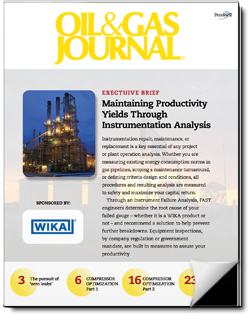|
Subsea Hardware spend to double to $124 billion
Douglas-Westwood (DW) forecast subsea hardware spend is set to double to $124 billion during 2013-2017 compared to the preceding five-year period. The new third edition of Douglas-Westwood’s Subsea Hardware Market Forecast launched today analyses the market through to 2017, examining the key activity trends to provide detailed insight for major players and new entrants alike.
“The prospects for the subsea hardware sector look good, however, players will face significant challenges over the forecast period,” said report lead author Angela MacCormack, an example is Brazil which accounts for 14% of our forecast subsea Capex. Project execution is a major issue for Petrobras with 70% local content requirements and engineer shortages placing pressure on the supply chain, inflating costs and delaying delivery of production systems (predominantly FPSOs). Such delays could impact the timing of subsea hardware installations and spend profiles.
“Our outlook takes a conservative view of stated future prospects, with some 60% additional slated projects that we have removed from our forecast. Given capacity constraints evident in the industry, we believe that this approach provides a realistic appraisal of future prospects.”
“Consensus is that oil prices will not grow at the same rate as the last cycle or will, in fact, fall slightly from current levels,” commented DW director Steve Robertson. “Whilst we believe that oil supply constraints will support the price in the long term, it should be recognised that the free cash flow of E&P operators will be steady or trending downward, given that most are also seeing flat or declining production levels. The E&P companies will, therefore, not be positioned to absorb cost increases and indications from our oil company clients suggest that they are already putting pressure on the supply chain to control costs and increase efficiency. However, most of our forecast subsea field developments are viable at $60 to $80 oil prices and we believe that fundamentals strongly support long-term oil prices significantly above these levels.
The report notes that reducing conventional opportunities, high oil prices and more advanced subsea hardware solutions are resulting in fields being increasingly developed in deeper waters, in remote locations and in more extreme metocean conditions. In addition, the offshore industry is being challenged to recover smaller, more widely scattered reserves. The growing use of subsea processing technology, such as subsea separation, multi-phase pumping and gas compression, as an alternative to the use of fixed processing platforms will also tend to provide upside potential. Moves in the industry, particularly from operator BP, to develop 20,000 PSI technology could unlock fields that are currently inaccessible with existing hardware.
“Subsea developments will continue to account for an ever-increasing share of global offshore activity. The technologies deployed are unlocking reserves that would previously have been difficult or impossible to access and our study shows the sector has become a very sizable opportunity for the oilfield service and equipment industry. The outlook for the subsea hardware market shows long-term growth potential, particularly in Africa, Asia-Pacific and Brazil and in addition new markets are developing in the Eastern Mediterranean and East Africa,” said
MacCormack. More: http://www.douglas-westwood.com
Source: Douglas-Westwood
April 23, 2013
|
PennEnergy
Weekly
Video News

.
Oil
& Gas Journal:
Worldwide more than 100,000
paid subscriptions
Learn
more
.
OGJ
Executive Briefs 
.PennWell Petroleum Group:
OGJ - Oil & Gas Journal
OGJ_eNewsletter
Offshore Magazine
Offshore eNewsletter
Oil & Gas Financial Journal
Oil, Gas & Petrochem
OGJ Russia
OGJ LatinoAmericana
PennEnergy
PennEnergy-eNewsletter
+ + +
For more information, media
kits or
sample copies please contact
wilhelms@pennwell.com
www.sicking.de
|


